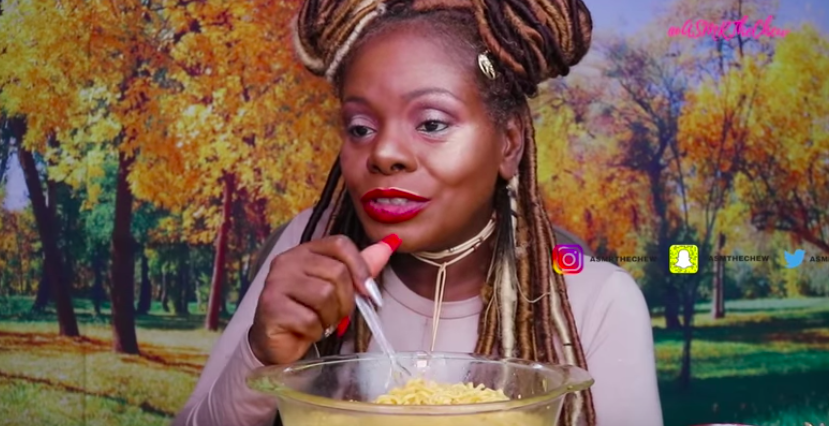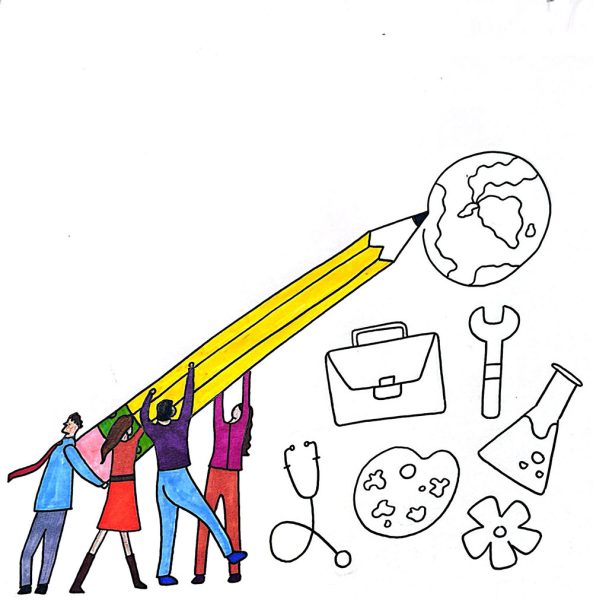ASMR Calms Anxious Students
Crunch, crunch, crunch… the chewing sound resonates as YouTuber Spirit Payton of ASMR channel The Chew chomps on a pickle.
Tap, tap, tap… the clickety keyboard sound intensifies as Payton continues to type away.
Standing at 519,504 subscribers and 102,920,720 lifetime views as of Nov. 9, Payton is just a part of the growing ASMR community.
ASMR stands for Autonomous Sensory Meridian Response.
“It is a relaxing, often sedative sensation that begins on the scalp and moves down the body,” according to Allison Mooney and Jason Klein of Think with Google. People who watch ASMR enjoy a static-like tingling that reverberates throughout the body.
Before it became a trend in America, ASMR originated in South Korean, and spread in the US through social media such as Instagram. Things like soap, sand cutting and slime became a sensation before eating sounds were popular.
ASMR popularity increases every day on YouTube, and popular ASMR YouTube channels have over a million subscribers.
According to Youtube, Some Popular ASMR/ Mukbang Youtubers & Number of Subscribers:
-
@ASMRTHECHEW 510,267 subscribers (personal favorite)
-
@ASMRDARLING 2,047,155 subscribers
-
@SAS-ASMR 3,405,552 subscribers
-
@SuellASMR 1,222,945 subscribers
-
@BlovesLife 1,023,904 subscribers (personal favorite)
According to ASMR University https://asmruniversity.com/, ASMR is broken down into trigger categories:
Tactile (felt) – light touch, massage, hair touching, grooming, physical examination;
Visual (seen) – eye contact, observing hand movements;
Auditory (heard) – spoken sounds, soft sounds, whispering, slow, gentle, increased pitch, caring, monotone;
Oral sounds – mouth sounds, chewing sounds, blowing sounds;
Object sounds – tapping, scratching, cutting, crinkling, stroking, handling of objects.
Among the ASMR triggers, oral sounds like chewing tend to become more popular on YouTube, in the form of mukbangs and no talking videos. No talking videos focus on the chewing aspect. Mukbangs, on the other hand, are an audiovisual broadcast in which the host eats and/or prepares large amounts of food while carrying a conversation with viewers. Most common foods that are eaten include seafood, pickles and honeycomb.
Some people might find the chewing irritating, but others find it very soothing.
“At first I thought it was weird, but then I realized why people like it,” senior Shelli Zamir said. “Now I just listen to it when I need to fall asleep, and I also make my own videos for fun, it’s definitely a great experience.”
It’s not for everyone though.
“It’s kinda cringy, ” senior Mariah Sanders said.
Another popular form of ASMR is object sounds, including tapping, scratching, cutting, crinkling, stroking and general handling of objects.
Have you ever scrolled down your browser page, caught a video of someone cutting soap or playing with slime and felt this sudden satisfaction? Those are ASMR object sounds.
“I see it on Instagram, and I get interested at first then move onto the next thing, it’s not something I would listen to as a hobby,” sophomore Nijah McClain said.
And if you have not experienced it yet, then take three minutes out of your day to check out ASMR videos through Instagram, Twitter or Youtube and you may find that it helps relieve stress.













![“My parents have always said that education is important. My parents are Chinese immigrants, I'm Chinese American, [and that's a] value that has always been ingrained in our community,” said Senior Lyndia Zheng, pictured with Tony Zheng](https://bcomber.org/wp-content/uploads/2025/10/DSC_4244-600x400.jpg)